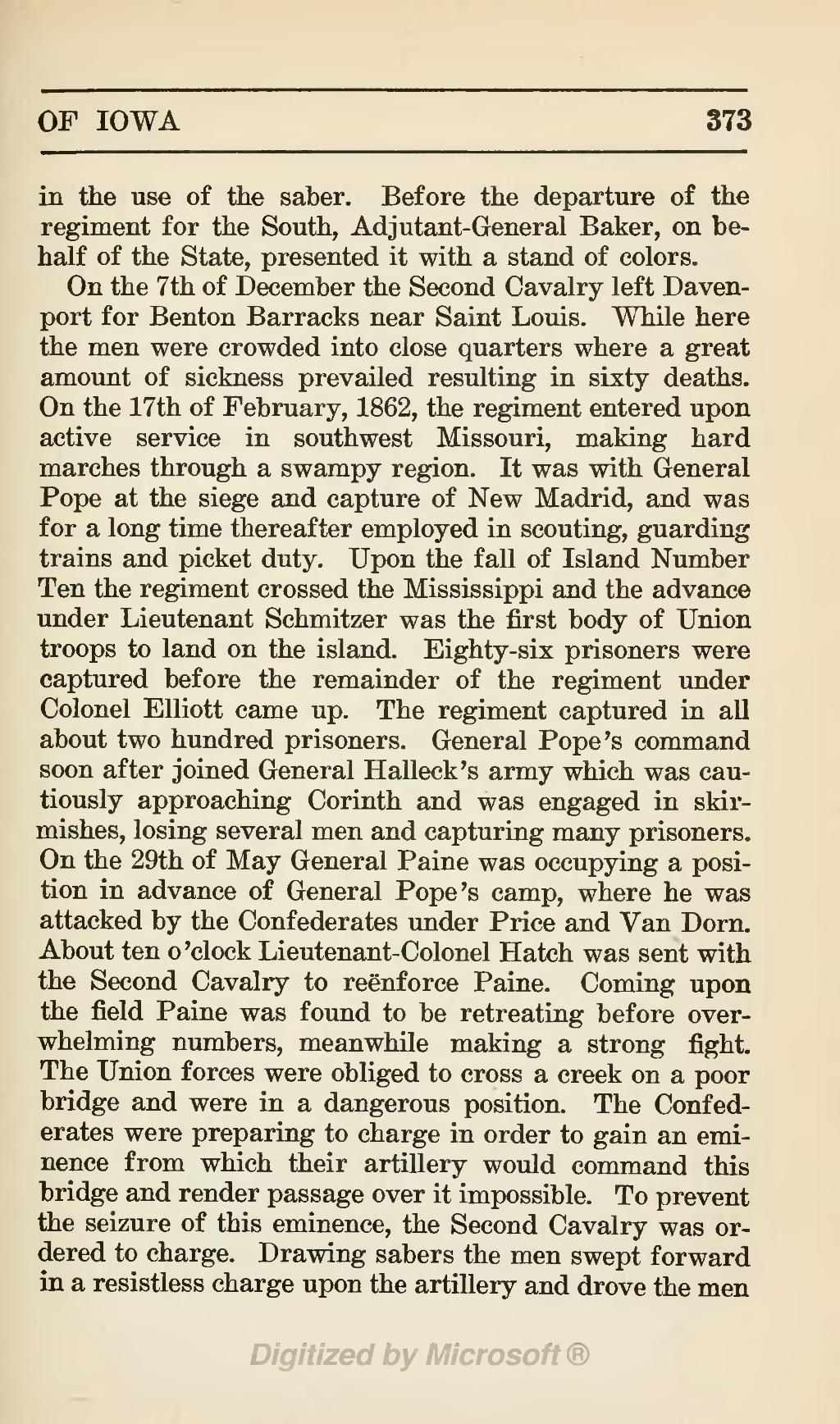in the use of the saber. Before the departure of the regiment for the South, Adjutant-General Baker, on behalf of the State, presented it with a stand of colors.
On the 7th of December the Second Cavalry left Davenport for Benton Barracks near Saint Louis. While here the men were crowded into close quarters where a great amount of sickness prevailed resulting in sixty deaths. On the 17th of February, 1862, the regiment entered upon active service in southwest Missouri, making hard marches through a swampy region. It was with General Pope at the siege and capture of New Madrid, and was for a long time thereafter employed in scouting, guarding trains and picket duty. Upon the fall of Island Number Ten the regiment crossed the Mississippi and the advance under Lieutenant Schmitzer was the first body of Union troops to land on the island. Eighty-six prisoners were captured before the remainder of the regiment captured in all about two hundred prisoners. General Pope’s command soon after joined General Halleck’s army which was cautiously approaching Corinth and was engaged in skirmishes, losing several men and capturing many prisoners. On the 29th of May General Paine was occupying a position in advance of General Pope’s camp, where he was attacked by the Confederates under Price and Van Dorn. About ten o’clock Lieutenant-Colonel Hatch was sent with the Second Cavalry to reënforce Paine. Coming upon the field Paine was found to be retreating before overwhelming numbers, meanwhile making a strong fight. The Union forces were obliged to cross a creek on a poor bridge and were in a dangerous position. The Confederates were preparing to charge in order to gain an eminence from which their artillery would command this bridge and render passage over it impossible. To prevent the seizure of this eminence, the Second Cavalry was ordered to charge. Drawing sabers the men swept forward in a resistless charge upon the artillery and drove the men
